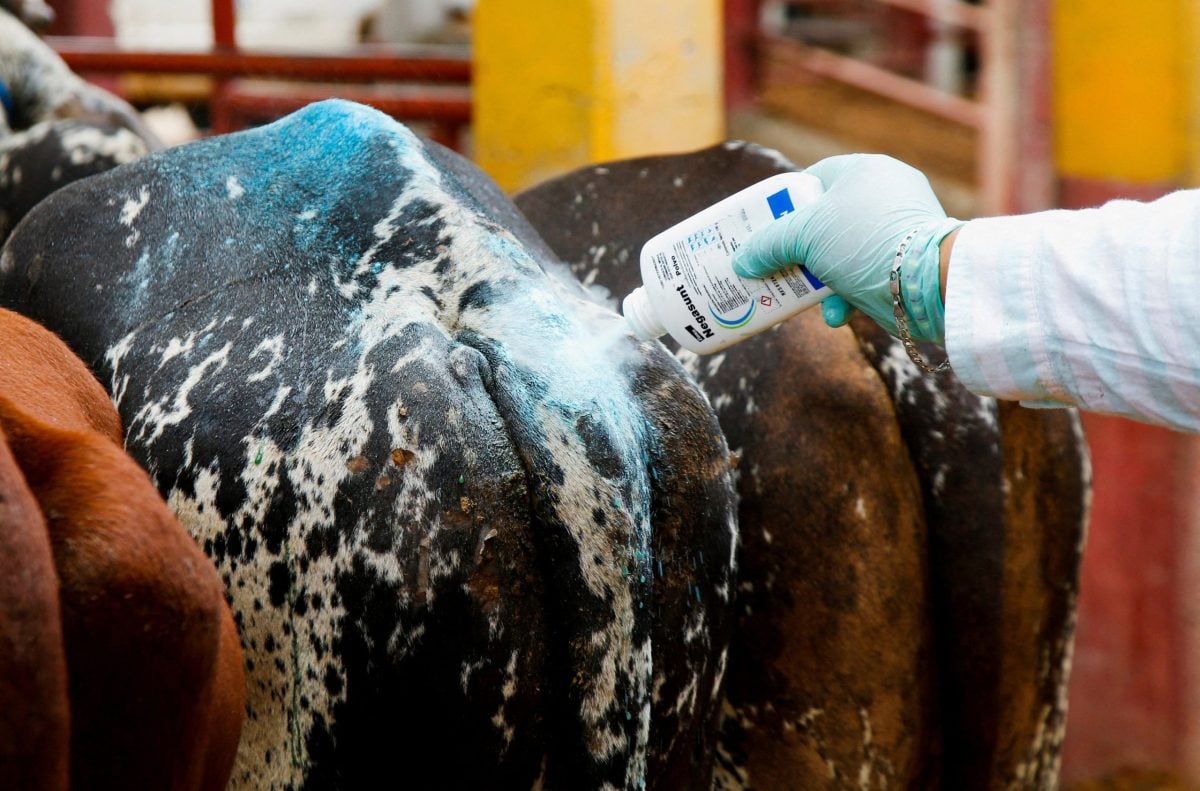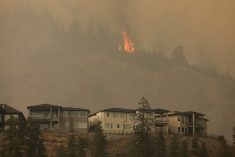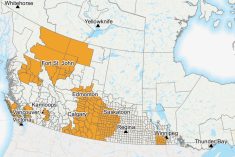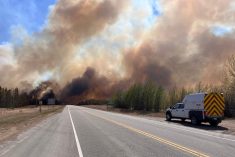Mother Nature has dealt a weak hand to many northwestern Saskatchewan livestock producers this year as frost, a cool spring and dry weather have hit pastures and hay stands.
But there are still a few strategies for producers to make the best — and avoid the worst — of what the weather has left them.
Watch for nitrates
Spring frosts mean nitrates in pasture and feed could be a problem for livestock producers.
Bacteria in a cow’s rumen convert nitrates in feed to nitrites. If nitrate levels in feed are high, both nitrites and nitrates accumulate in the rumen. Ruminants such as sheep and goats are also vulnerable to high-nitrate feeds, according to Alberta Agriculture and Forestry.
Read Also

Mexico agriculture secretary says still no date for restarting cattle exports to U.S.
Mexican Agriculture Minister Julio Berdegue said on Wednesday that Mexico and the United States have not yet set a date to resume Mexican cattle exports amid an outbreak of the flesh-eating screwworm parasite.
High nitrite levels are a problem because they prevent haemoglobin from carrying oxygen, according to Stephanie McMillan, an agronomist and beef nutritionist with AgriTeam Services at Glaslyn, Sask.
“They’ll start to look really lethargic and like they’re having troubles breathing,” she said. Eventually, cattle might choke, have respiration issues, and die if left untreated.
Producers should be wary of alfalfa fields, she said, but if the proportion of alfalfa is low enough to dilute the nitrates, it shouldn’t be a concern. A pasture of 60 per cent grass, 40 per cent alfalfa should be fine, for example.
“But definitely kind of keep an eye on it in the first few days that they’re out,” she said.
Nitrates could also be a problem in hay fields touched by frost, so McMillan recommends forage testing.
Saskatchewan Agriculture is also encouraging producers to test their forages, as part of its Hay Harvest Challenge. Participating producers will be eligible for prizes such as $250 vouchers for feed testing and a $1,000 voucher from Peavey Mart.
Alfalfa isn’t the only forage vulnerable to nitrate accumulation. Annuals, such as greenfeeds, canola and sorghum, are a few common nitrate sources, according to Alberta Agriculture and Forestry. Some weeds, including lambs quarters, pigweed and various thistles, also accumulate nitrates.
Any stress, such as drought, hail or even cool, cloudy weather, can trigger nitrate accumulation.
Nitrate levels will return to normal over several days if the stress ceases and the plants recover. But if the plants are grazed or harvested shortly after the stress, nitrate poisoning is a danger.
For more information on nitrates, see Alberta Agriculture and Forestry’s website.
Breaking early dormancy
Dry conditions also pushed some pastures into early dormancy this year. Livestock producers were considering grazing pastures or cutting hay early to stop seed from setting, McMillan said.
If rain later fell on those pastures or hay stands, they would regrow, she said.
That strategy would have paid for some producers in the northwest, which did receive some moisture in June, which in turn should rejuvenate some of those pastures.
Stretching feed
Some farmers reseeded frozen canola to greenfeed, McMillan said, as they knew it was going to be dry, making a little more greenfeed available for livestock producers.
Cow-calf producers can also look at creep-feeding calves to stretch pastures, McMillan said.
“(Creep-feeding) does directly correlate to lowering how much they are consuming and so then you’re going to end up with a little more dry matter for your cows.”
Rotational grazing should also pay in a dry year, as these pastures will regrow after a rain.
“If you can, you really only want them to chew down 50 per cent of the biomass above the ground,” McMillan said. “So if you can move them before they get lower than that, it’ll be able to grow back a little bit better, sooner.”
— Lisa Guenther is a field editor for Grainews and Country Guide at Livelong, Sask. Follow her at @LtoG on Twitter.













